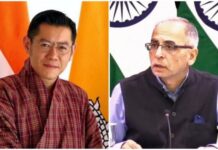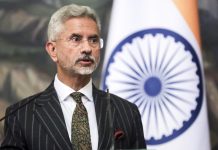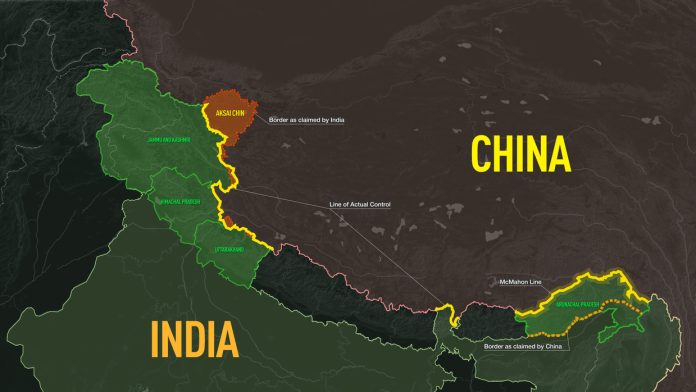India has initiated a retaliatory effort against China’s renaming of locations in India’s Arunachal Pradesh state. The Indian government intends to rename over two dozen places in China’s Tibet Autonomous Region as a response.
According to The Diplomat, a media organization, they have obtained a comprehensive list of the places that will be renamed in China’s Tibet Autonomous Region. Indian military sources have provided this list, and it is anticipated that the official release will take place once the new government assumes power in Delhi, following the formation of the new government.
Starting on June 8, Modi will serve his third term as Prime Minister with a smaller majority, necessitating reliance on coalition partners for governing. However, this reduced political space is unlikely to significantly affect foreign policy, as there is broad support across multiple political parties for Modi’s objective of enhancing India’s global influence and power.
New Delhi suspects that China’s renaming of places in Arunachal Pradesh is an attempt to bolster Beijing’s territorial claim on this large province in northeastern India, which China refers to as Zangnan or “southern Tibet.” This move is seen as an effort to assert control over the region and consolidate China’s influence.
According to The Diplomat, the Indian Army’s information warfare division is believed to be responsible for the renaming of Tibetan places in Arunachal Pradesh. Additionally, with the support of renowned research institutes such as the Asiatic Society in Kolkata, the Indian Army has been actively disproving the legitimacy of the Chinese names by conducting thorough research. Their efforts aim to counter China’s narrative and provide accurate information regarding the region.
Under its logo, the Indian Army has shared detailed tweets that challenge China’s renaming of seven places in Arunachal Pradesh. Furthermore, they are actively working to counter the renaming of all the other 30 or so places that the Chinese government has renamed. The tweets aim to provide accurate information and refute China’s attempts to assert control over these regions.
India’s military has recently compiled a list of over 30 places in Tibet that are set to be renamed. The objective behind this is to reclaim their ancient names in Indian languages, which are derived from historical records. This initiative aims to restore and recognize the historical significance of these places based on authentic sources.
According to sources, this list of renamed places in Tibet will soon be made public through various media platforms. This is part of a larger global campaign aimed at presenting a compelling counter-narrative to China’s claims on India’s Arunachal Pradesh state and other disputed border regions. The intention is to showcase India’s perspective and challenge China’s assertions by providing alternative viewpoints and historical evidence.
Military officials, who wished to remain anonymous, have stated that the new names given to these places are supported by thorough historical research. This signifies that considerable efforts have been made to ensure the accuracy and legitimacy of the chosen names.
According to an Ex IB officer, if India proceeds with the renaming campaign, it would essentially reopen the issue of Tibet. Although India has recognized Tibet as part of China following its forcible occupation by Beijing, the current Modi government shows a willingness to change its stance in order to counter China’s aggressive actions. This shift in approach reflects India’s efforts to challenge China’s territorial claims and renaming initiatives, as reported by The Diplomat.
In recent weeks, the Indian Army has arranged numerous media trips to the contested border regions. During these visits, journalists were given the opportunity to interact with local residents who strongly dispute China’s claims and assert that their allegiance has always been to India. These efforts aim to showcase the perspective of the locals and highlight their unwavering support for India’s sovereignty over these areas.
An officer involved in the campaign, who preferred to remain anonymous, stated that the primary objective is to promote India’s counter-narrative regarding the disputed border. This would be achieved by leveraging regional and global media platforms and emphasizing both comprehensive historical research and the opinions of local residents. The aim is to establish a strong and credible narrative that supports India’s perspective on the border issue.
In an apparent attempt to reinforce its territorial claim over Arunachal Pradesh, China renamed 30 locations along the Line of Actual Control (LAC) in India’s northeastern state in March. The Chinese Ministry of Civil Affairs, responsible for naming administrative divisions, issued a list of “standardized” geographical names in Arunachal Pradesh, known as Zangnan in Beijing’s terminology. This move by China was reported by the South China Morning Post, a Hong Kong-based newspaper.
China’s renaming of locations in Arunachal Pradesh comprises a list that consists of 11 residential areas, 12 mountains, four rivers, one lake, one mountain pass, and a parcel of land. These new names are recorded in Chinese characters, Tibetan language, and pinyin, which is the Roman alphabet-based representation of Mandarin Chinese.
Quoting the Chinese Ministry of Civil Affairs, the South China Morning Post reported that the renaming of geographical names in Zangnan (Arunachal Pradesh) was carried out in accordance with regulations defined by China’s cabinet, the State Council. The ministry, in collaboration with other relevant departments, stated that they standardized certain geographical names in the region based on these provisions.
China’s decision to rename places in Arunachal Pradesh is not new, as this marks the fourth instance of such a unilateral action by Beijing. In 2017, the first list of six standardized names for locations in Arunachal Pradesh was released, followed by a second list in 2021 featuring 15 place names. In 2023, a third list was published, containing names for 11 places. However, the most recent fourth list is particularly significant, as it introduces nearly the same number of new place names as the previous three lists combined.
India has consistently dismissed China’s attempts to rename places in Arunachal Pradesh, affirming that the state is an intrinsic component of the nation. India maintains that the act of assigning “invented” names does not change the underlying reality of Arunachal Pradesh’s status as an integral part of the country.
In 2023, the former spokesperson of India’s External Affairs Ministry, Arindam Bagchi, expressed the country’s response to the reports of China’s renaming efforts. He straightforwardly rejected China’s attempt, emphasizing that this was not the first time such actions were taken by China. India’s outright rejection asserts its stance on the matter, asserting that it does not accept the validity or legitimacy of China’s renaming endeavors.
Furthermore, in response to China’s latest round of efforts to assert its claims on Arunachal Pradesh, India’s Prime Minister Narendra Modi visited the region in March 2024. During his visit, he inaugurated the Sela Tunnel constructed at an elevation of 13,000 feet. Beijing responded by filing a diplomatic protest with India.
Addressing China’s persistent claims on Arunachal Pradesh, India’s External Affairs Minister S. Jaishankar described them as “ludicrous” on March 23. He emphasized that the state was an inherent and natural part of India, firmly rejecting China’s assertions.
Regarding the issue of Arunachal Pradesh, India’s External Affairs Minister responded that it is not a new matter. He highlighted that China’s claims and attempts to expand those claims are baseless and continue to be deemed as ludicrous. He made these remarks while addressing a question on the Arunachal issue during a lecture at the esteemed Institute of South Asian Studies at the National University of Singapore. The minister emphasized India’s steadfast position regarding the region’s status.
In addition, the External Affairs Minister reiterated India’s clear and unwavering stance on the matter, noting that it has remained consistent over time. He acknowledged that the issue of Arunachal Pradesh would be an integral part of the ongoing boundary discussions between the two countries. This statement reflects India’s commitment to address the matter within the context of bilateral dialogues.
































